BMW iX vs Mercedes EQE SUV - Differences and prices compared
Costs and Efficiency:
Looking at overall running costs, both models reveal some interesting differences in everyday economy.
Mercedes EQE SUV has a minimal advantage in terms of price – it starts at 71600 £, while the BMW iX costs 71600 £. That’s a price difference of around 18 £.
In terms of energy consumption, the advantage goes to the BMW iX: with 17.80 kWh per 100 km, it’s slight more efficient than the Mercedes EQE SUV with 18.30 kWh. That’s a difference of about 0.50 kWh.
As for range, the BMW iX performs somewhat better – achieving up to 701 km, about 90 km more than the Mercedes EQE SUV.
Engine and Performance:
Power, torque and acceleration are the classic benchmarks for car enthusiasts – and here, some clear differences start to show.
When it comes to engine power, the BMW iX has a hardly perceptible edge – offering 659 HP compared to 625 HP. That’s roughly 34 HP more horsepower.
In acceleration from 0 to 100 km/h, the Mercedes EQE SUV is slight quicker – completing the sprint in 3.70 s, while the BMW iX takes 3.80 s. That’s about 0.10 s faster.
In terms of top speed, the BMW iX performs barely noticeable better – reaching 250 km/h, while the Mercedes EQE SUV tops out at 240 km/h. The difference is around 10 km/h.
There’s also a difference in torque: BMW iX pulls hardly perceptible stronger with 1015 Nm compared to 950 Nm. That’s about 65 Nm difference.
Space and Everyday Use:
Whether family car or daily driver – which one offers more room, flexibility and comfort?
Seats: offers more seating capacity – vs .
In curb weight, Mercedes EQE SUV is barely noticeable lighter – 2440 kg compared to 2525 kg. The difference is around 85 kg.
In terms of boot space, the Mercedes EQE SUV offers barely noticeable more room – 520 L compared to 500 L. That’s a difference of about 20 L.
In maximum load capacity, the BMW iX performs slight better – up to 1750 L, which is about 75 L more than the Mercedes EQE SUV.
When it comes to payload, Mercedes EQE SUV minimal takes the win – 580 kg compared to 575 kg. That’s a difference of about 5 kg.
Who wins the race?
The BMW iX proves to be secures victory with a clear margin and therefore becomes our DriveDuel Champion!
BMW iX is the better all-rounder in this comparison.
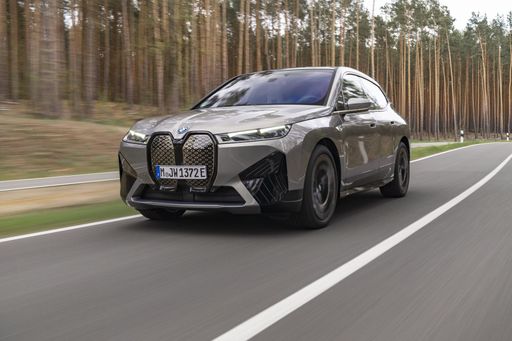 @ BMW Group Press
@ BMW Group Press
BMW iX
Costs and Consumption
View detailed analysis
Engine and Performance
View detailed analysis
Dimensions and Body
View detailed analysis
BMW iX
The BMW iX arrives like a tech-rich luxury SUV that refuses to shout, offering a serene yet authoritative road presence that suits both city commutes and long-distance cruising. Inside, its minimalist cabin wraps high-quality materials and clever interfaces around a driver-focused layout, making it feel more like a forward-thinking lounge than just another electric appliance — and yes, it still delivers the dynamic driving character you'd expect from a BMW.
details @ BMW Group Press
@ BMW Group Press
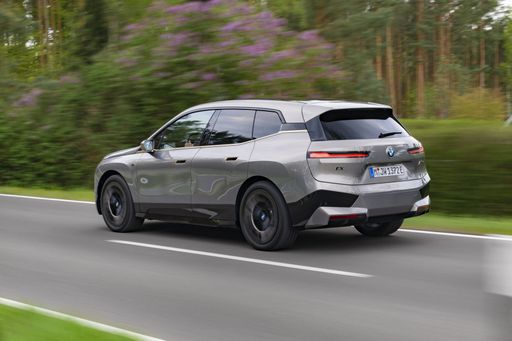 @ BMW Group Press
@ BMW Group Press
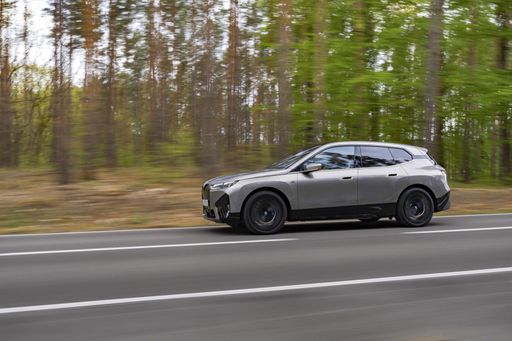 @ BMW Group Press
@ BMW Group Press
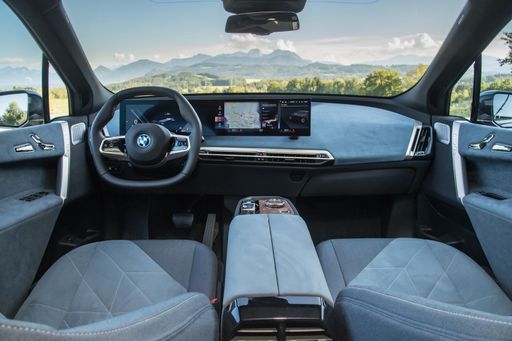 @ BMW Group Press
@ BMW Group Press
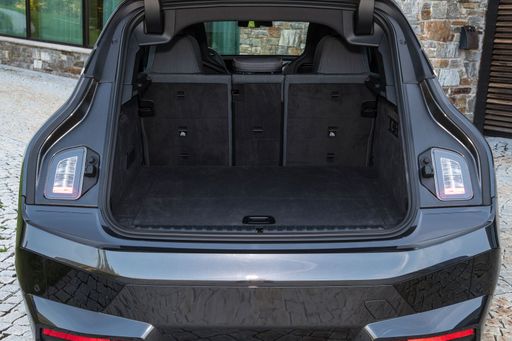 @ BMW Group Press
@ BMW Group Press
Mercedes EQE SUV
The Mercedes EQE SUV wraps silent electric power in a sumptuous, tech-filled shell, offering a cocoon-like cabin that makes long journeys feel indulgent. It’s not a driver's toy but a sophisticated cruiser for buyers who want luxury, space and futuristic gadgetry without shouting for attention.
details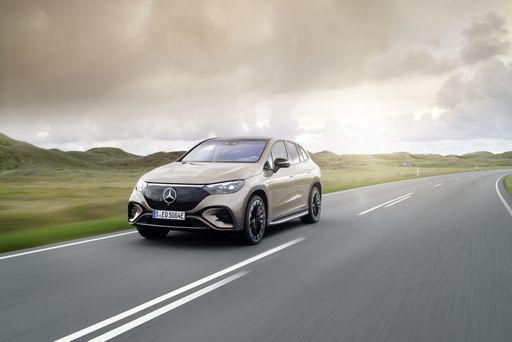 @ Mercedes-Benz Group Media
@ Mercedes-Benz Group Media
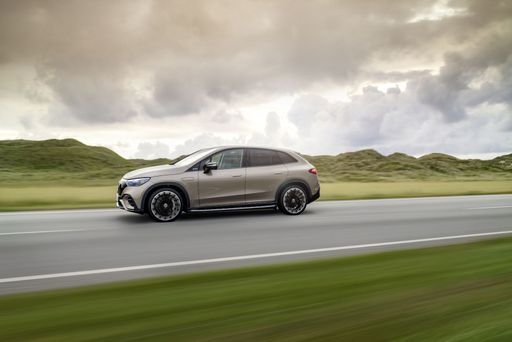 @ Mercedes-Benz Group Media
@ Mercedes-Benz Group Media
 @ Mercedes-Benz Group Media
@ Mercedes-Benz Group Media
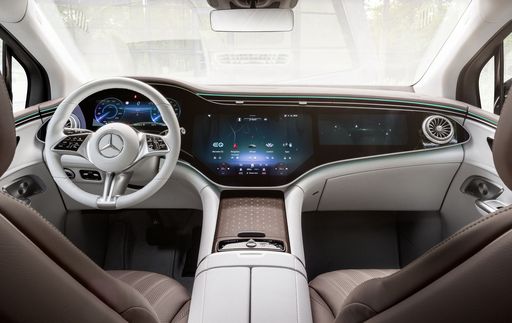 @ Mercedes-Benz Group Media
@ Mercedes-Benz Group Media
 @ BMW Group Press
@ BMW Group Press
|
 @ Mercedes-Benz Group Media
@ Mercedes-Benz Group Media
|
|
|
|
Costs and Consumption |
|
|---|---|
|
Price
71600 - 107100 £
|
Price
71600 - 125100 £
|
|
Consumption L/100km
-
|
Consumption L/100km
-
|
|
Consumption kWh/100km
17.8 - 20.6 kWh
|
Consumption kWh/100km
18.3 - 23.1 kWh
|
|
Electric Range
600 - 701 km
|
Electric Range
453 - 611 km
|
|
Battery Capacity
96 - 109.6 kWh
|
Battery Capacity
90.5 - 96 kWh
|
|
co2
0 g/km
|
co2
0 g/km
|
|
Fuel tank capacity
-
|
Fuel tank capacity
-
|
Dimensions and Body |
|
|---|---|
|
Body Type
SUV
|
Body Type
SUV
|
|
Seats
5
|
Seats
5
|
|
Doors
5
|
Doors
4
|
|
Curb weight
2525 - 2655 kg
|
Curb weight
2440 - 2615 kg
|
|
Trunk capacity
500 L
|
Trunk capacity
520 L
|
|
Length
4965 mm
|
Length
4863 - 4879 mm
|
|
Width
1970 mm
|
Width
1940 mm
|
|
Height
1688 - 1695 mm
|
Height
1672 - 1685 mm
|
|
Max trunk capacity
1750 L
|
Max trunk capacity
1675 L
|
|
Payload
505 - 575 kg
|
Payload
505 - 580 kg
|
Engine and Performance |
|
|---|---|
|
Engine Type
Electric
|
Engine Type
Electric
|
|
Transmission
Automatic
|
Transmission
Automatic
|
|
Transmission Detail
Reduction Gearbox
|
Transmission Detail
Reduction Gearbox
|
|
Drive Type
All-Wheel Drive
|
Drive Type
All-Wheel Drive, Rear-Wheel Drive
|
|
Power HP
408 - 659 HP
|
Power HP
265 - 625 HP
|
|
Acceleration 0-100km/h
3.8 - 5.1 s
|
Acceleration 0-100km/h
3.7 - 7.1 s
|
|
Max Speed
200 - 250 km/h
|
Max Speed
210 - 240 km/h
|
|
Torque
700 - 1015 Nm
|
Torque
550 - 950 Nm
|
|
Number of Cylinders
-
|
Number of Cylinders
-
|
|
Power kW
300 - 485 kW
|
Power kW
195 - 460 kW
|
|
Engine capacity
-
|
Engine capacity
-
|
General |
|
|---|---|
|
Model Year
2025
|
Model Year
2023 - 2025
|
|
CO2 Efficiency Class
A
|
CO2 Efficiency Class
A
|
|
Brand
BMW
|
Brand
Mercedes-Benz
|
Is the BMW iX offered with different drivetrains?
The BMW iX is offered with All-Wheel Drive.
The prices and data displayed are estimates based on German list prices and may vary by country. This information is not legally binding.
